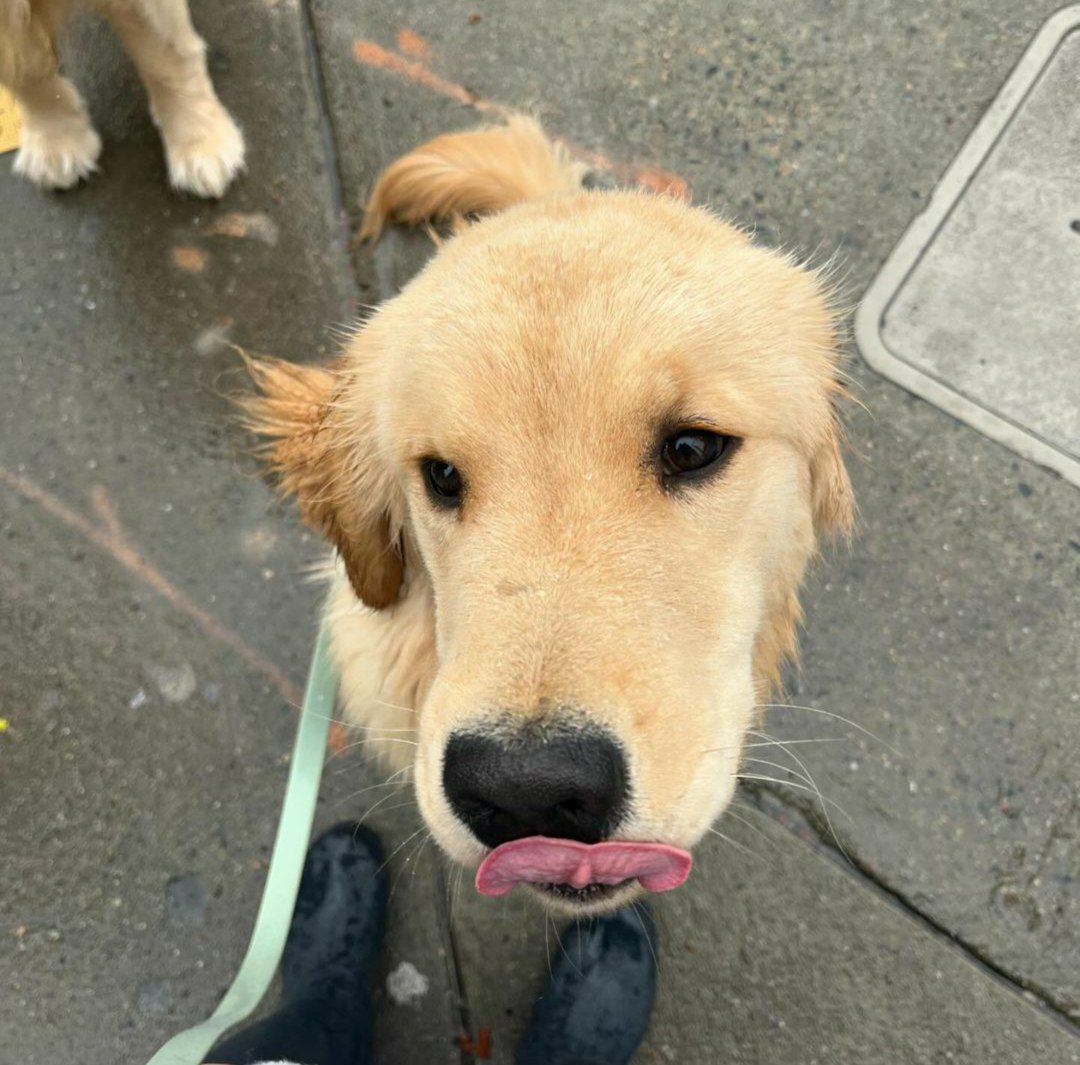Golden Years Clues: Recognizing Your Dog's Seniority
Many dog owners miss the subtle signs of aging in their furry companions. This guide explores the physical and behavioral changes that occur as dogs enter their senior years, helping you identify when your pup might be considered a senior dog.
Aging
Here are some ways to expand on your information about aging in dogs:
- Species Differences: You can mention that while aging is a universal process, different species age at varying rates. Briefly touch on how a dog’s lifespan differs from a human’s and how factors like breed and size influence their aging process.
- Specific Effects on Dogs: Expand on the impacts of aging on a dog’s body. Mention how their:
- Mobility might be affected by joint problems like arthritis.
- Sensory perception might decline, including vision, hearing, and smell.

- Immune system weakens, making them more susceptible to infections.
- Metabolism slows down, potentially leading to weight gain.
- Cognitive Decline: Briefly mention Canine Cognitive Dysfunction (CCD), similar to Alzheimer’s in humans, which can affect some senior dogs.
- Positive Reinforcement: End by emphasizing preventative measures. You can mention the importance of regular vet checkups, a balanced diet, appropriate exercise (adjusted for their age), and mental stimulation to keep their minds sharp.
By adding these details, you’ll provide a more comprehensive picture of how aging affects dogs and how to support them throughout their golden years.
When a dog is considered old
Age is just one factor, and it’s more about a dog’s overall health and maturity than a strict number. Here’s a breakdown of how we can think about a dog’s age:
Life Expectancy: As you mentioned, different breeds have varying lifespans. A Great Dane, for example, lives an average of 7-10 years, while a Chihuahua might live 15-20 years.
Senior Classification: Based on life expectancy, a dog is generally considered a senior when it reaches the last quarter to a third of its expected lifespan. So, a Great Dane might be a senior at 6-7 years old, while a Chihuahua wouldn’t be considered senior until closer to 11-12 years old


- Individual Variation: Even within breeds, there can be significant variation in how dogs age. Genetics, overall health, and lifestyle all play a role. Some dogs might show signs of aging earlier than others, even within the same breed.
Focus on Signs, Not Just Age:
Instead of solely focusing on a specific age, it’s more helpful to watch for signs that your dog might be entering its senior years. These can include:
- Physical Changes: Graying muzzle, decreased mobility, hearing or vision loss.
- Behavioral Changes: Decreased energy levels, less interest in playing, changes in sleep patterns, confusion.
- Health Changes: Increased susceptibility to infections, weight gain or loss, changes in appetite.
By being aware of these signs, you can adjust your dog’s care to their changing needs and ensure they have a happy and comfortable golden age.
Consequences of aging for the body
Aging’s effects are widespread, impacting the entire body. Here’s how we can expand on this:
Cellular Level:
- Telomere Shortening: Telomeres are protective caps on chromosomes that shorten with each cell division. As they shorten, cells have difficulty replicating and eventually die.
- DNA Damage: Over time, free radicals and other stressors damage DNA, leading to cellular dysfunction and increased risk of disease.
Organ System Decline:
- Musculoskeletal System: Muscles lose strength and mass, leading to decreased mobility and stamina. Joints become stiffer and more susceptible to arthritis.

- Cardiovascular System: Heart function weakens, increasing the risk of heart disease. Blood vessels become less elastic, raising blood pressure.
- Immune System: The body’s ability to fight infection declines, making senior dogs more susceptible to illness.
- Nervous System: Nerve signals slow, potentially affecting coordination, balance, and cognitive function.
- Sensory Organs: Vision, hearing, and smell may decline with age.
Increased Disease Risk:
As organs become less efficient, the risk of various diseases increases. These include:
- Cancer: DNA damage and weakened immune system contribute to a higher risk.
- Arthritis: Joint degeneration due to wear and tear.
- Kidney Disease: Reduced blood flow and filtration capacity in the kidneys.
- Cognitive Dysfunction: Similar to Alzheimer’s in humans, leading to memory loss and confusion.
Remember, It’s a Spectrum:
The severity of these consequences can vary greatly between individuals. Genetics, lifestyle choices, and preventative care all play a significant role.

Fat deposits increase
Muscle Loss and Fat Gain:
- Metabolic Shift: As dogs age, their metabolism slows down. They burn calories less efficiently, making it easier to gain weight.
- Decreased Activity: Senior dogs often have lower energy levels and might become less interested in exercise. This decline in activity further contributes to weight gain and muscle loss.
- Hormonal Changes: Hormonal changes associated with aging can also affect muscle mass and fat distribution.
The Vicious Cycle:
As you mentioned, this becomes a vicious cycle. Here’s how it breaks down:
- Muscle Loss: With less activity and a slower metabolism, dogs lose muscle mass.
- Decreased Mobility: Loss of muscle mass weakens a dog and makes them less mobile.
- Reduced Activity: Being less mobile discourages exercise, further accelerating muscle loss.
- Weight Gain: With less activity and a slower metabolism, even maintaining their current food intake leads to weight gain.
Breaking the Cycle:
The good news is we can break this cycle with proper care:
- Diet: Adjusting a dog’s diet to meet their changing needs with fewer calories and higher protein content helps maintain muscle mass.
- Exercise: Regular, low-impact exercise like swimming or gentle walks helps maintain muscle tone and mobility.
- Pain Management: If a dog is experiencing pain, addressing it through medication or physical therapy can encourage them to be more active.
By focusing on these aspects, we can help senior dogs maintain a healthy weight and keep them mobile for a longer and happier life.
Dental problems
- Early Signs: Mention some early signs of dental problems in senior dogs, such as bad breath, difficulty chewing, pawing at the mouth, or reluctance to eat hard food.
- Veterinary Care: While brushing is important, emphasize the need for regular professional dental cleanings under anesthesia by a veterinarian. This removes tartar buildup that brushing can’t reach.
- Dental Treats: You mentioned kibble, but some dental chews and treats can also help with plaque control. It’s important to choose ones with the Veterinary Oral Health Council (VOHC) seal of approval for effectiveness.
By including these details, you provide a more comprehensive picture of dental care for senior dogs and the importance of both at-home and professional care.


Slower digestive transit
Causes of Slower Digestion:
- Weakened Muscles: The smooth muscles in the intestines that move food along become less efficient with age, leading to slower transit times.
- Reduced Acid Production: The stomach produces less hydrochloric acid, which helps break down food. This can lead to incomplete digestion and nutrient deficiencies.
- Decreased Enzyme Activity: The production of digestive enzymes that break down carbohydrates, proteins, and fats also declines with age.
Consequences of Slower Digestion:
- Constipation: Due to slower movement of food through the digestive tract, senior dogs are more prone to constipation.
- Diarrhea: Incomplete digestion can irritate the intestines and lead to diarrhea.
- Nutrient Deficiencies: Reduced absorption of nutrients from food can lead to deficiencies in vitamins, minerals, and essential fatty acids.
Dietary Management:
As you mentioned, an adapted diet can help manage these issues:
- Highly Digestible Ingredients: Look for food formulated with ingredients like chicken, lamb, or fish that are easily broken down by the digestive system.
- Fiber: While too much fiber can be problematic for some senior dogs, a moderate amount can help regulate digestion and prevent constipation.
- Probiotics: Probiotics can help maintain a healthy balance of gut bacteria, which aids in digestion and nutrient absorption.
By working with your veterinarian to choose the right diet, you can help your senior dog maintain a healthy digestive system and optimal nutrient intake.
Immune system and senses
Immune System:
- Reduced Response: The immune system’s ability to fight off infections and diseases weakens with age. This makes senior dogs more susceptible to:
- Bacterial and viral infections
- Autoimmune diseases
- Cancer
Sensory Decline:
- Vision: Cataracts, glaucoma, and other eye conditions can affect vision in older dogs.
- Hearing: Hearing loss is common in senior dogs, especially in certain breeds.
- Smell: A dog’s sense of smell is crucial for navigating their world. A decline in smell can affect appetite, interest in walks, and overall well-being.

Impact on Behavior:
- Changes in Appetite: Loss of vision and smell can make food less appealing, leading to a decreased appetite.
- Disorientation: Vision and hearing loss can disorient senior dogs, making them seem withdrawn or anxious.
Importance of Veterinary Care:
You’re absolutely right, consulting a veterinarian is crucial. Regular checkups can help:
- Detect Early Signs: Early detection of age-related health issues allows for prompt treatment and better management.
- Address Underlying Conditions: Sometimes, changes in behavior can be due to pain or discomfort from underlying conditions like arthritis.
- Adapt Care: A vet can recommend dietary changes, pain management strategies, and other adjustments to optimize your senior dog’s care.
By being aware of these changes and working with your veterinarian, you can ensure your senior dog enjoys a comfortable and fulfilling life despite the inevitable effects of aging.

